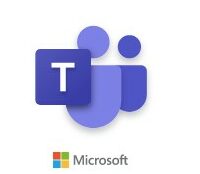 [German]Microsoft Teams does not update via Windows Update or via Office updates. Instead, the Teams client uses its own update strategy to keep itself current. Microsoft revealed some details about the Microsoft Teams update process in October 2022.
[German]Microsoft Teams does not update via Windows Update or via Office updates. Instead, the Teams client uses its own update strategy to keep itself current. Microsoft revealed some details about the Microsoft Teams update process in October 2022.
Microsoft explains Teams updates
Microsoft revealed some details about Teams updates in the late October 2022 article Teams update process. The update process is a somewhat complex undertaking with some exceptions and rules.
- Updates for the Teams web app are usually released on the 4th Monday of each month (updates for the MSI versions of Microsoft Office, on the other hand, are released on the 1st Tuesday of each month).
- However, following internal tests, the updates are not distributed to customers immediately after the release on the 4th Monday of the month, but "gradually over the course of the week".
- If a critical update is required, Teams will skip the above distribution schedule and install the update immediately after release.
To detect these update releases, the Microsoft Teams client checks in the background every few hours to see if an update is available. Users must be logged in for updates to be downloaded. Then the client downloads the update, but waits until the computer is inactive (idle) before installing the update in the background.
Shipped with Microsoft 365, but own updates
Microsoft Teams is installed by default with new installations of Microsoft 365 Apps for Business. Those who now assume that the client then also follows the update process of the other Office apps, such as Word and Excel, are wrong. Teams follows its own update process, as described above.
Microsoft Teams also does not provide admins with a way to distribute updates through any deployment mechanism. As an administrator, you can only assume that the Teams client will somehow update itself once a month. The staged rollout starting on the 4th Monday of each month also means that not all Teams clients in an organization are immediately at the same update level. Rather, they are updated in waves. In my eyes, this can become a problem when new functionalities are rolled out or bugs are fixed.
In a nutshell: Microsoft Teams is shipped with Microsoft 365 as an app, bit it uses it's own update cadence and update mechanism to keep the client up-to-date. Client updates are not distribute updates via Windows Update (there is also no MSI file for installation). The client also does not follow the update cycle of Microsoft Office 365 or update itself via Office updates. Instead, the client tries to keep itself up to date – whereby software versions older than 90 days are no longer supported. For administration in corporate environments, this doesn't really seem optimal to me. Or how do you see it?
Supplementary analysis of the updates
I came across the topic of Teams updates a few days ago via the following tweet from Frank Carius, as Frank addressed the issue of Microsoft Teams updates in this article.

Based on Microsoft's information about the update process above, Frank has compiled some more information about the update process in his article, based on his own analyses, which are quite worth reading. Teams used the open source solution Squirrel for updating (as a clicked-together app).





